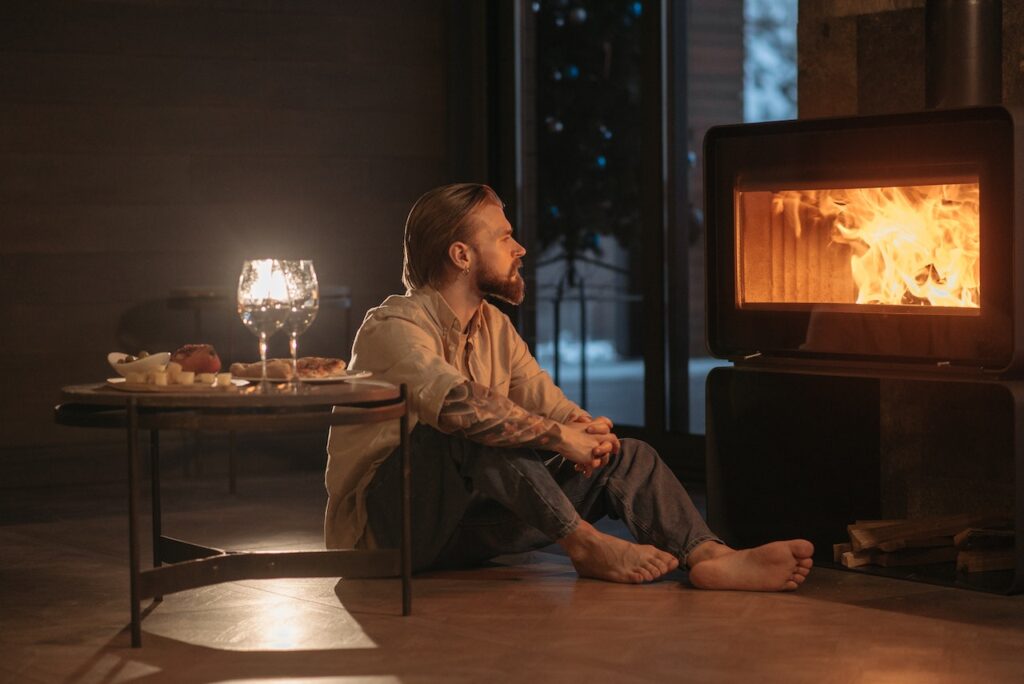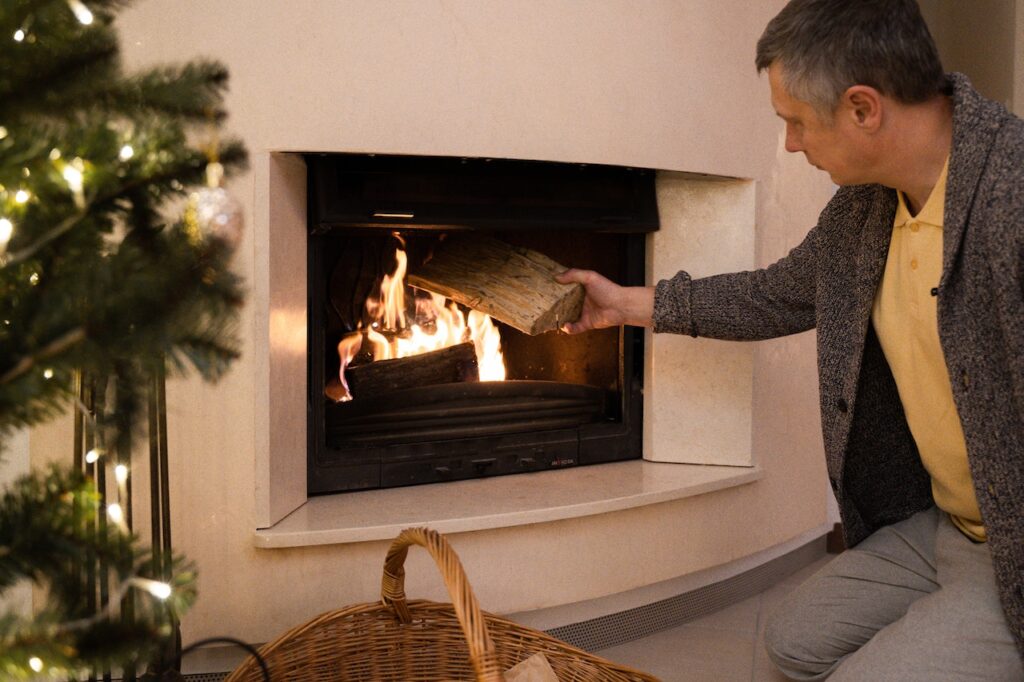
Wood fireplaces are all about warmth and togetherness. They not only bring heat on those cold nights, but also add more value to your property. Make sure you choose the right wood fireplace that perfectly complements your space and unique lifestyle.
Let’s start with the first question you are likely to encounter when looking for a living fireplace:
Which fireplace option is best: slow-combustion or open fire?
Wood heating is good heating, but what should you get? A slow-combustion fireplace or an open fireplace? To choose the right wood fireplace for your space, consider the following factors:

1. Efficiency
Slow-combustion fireplaces have a sealed combustion chamber with adjustable air vents, so they are designed for maximum fuel efficiency. They usually have an efficiency rating of 70% or more. This indicates that these fireplaces are able to convert a higher percentage of the wood’s energy into heat.
On the other hand, open fireplaces are less efficient. They lack a sealed combustion chamber and send most heat up the chimney. These fireplaces can typically burn the wood at a 20-30% efficiency.
2. Overall safety
Slow-combustion fireplaces are typically safer as they have a screen that prevents sparks and embers from escaping. They have a sealed combustion chamber that reduces the risk of backdraft – whether you use them as indoor or outdoor fireplaces.
3. Environmental impact
Compared to an open fireplace, a slow-combustion fireplace is more environmentally friendly. This is because it can produce less smoke and follows a controlled combustion process. Whereas, open fireplaces can lead to higher emissions of pollutants, such as carbon monoxide and delicate particulate matter.
4. Heating output
Since slow-combustion fireplaces provide a consistent source of heat, they are suitable for extended use during long winter nights. While open fireplaces create a cosy vibe, they are less effective when heating a space efficiently. In fact, slow-combustion fires offer more than twice the heat output of open fires.
5. Maintenance
Slow-combustion fireplaces require less frequent cleaning because they produce fewer creosote deposits in the chimney. However, you will need to clean the screen or glass door occasionally. Whereas, open fireplaces are likely to create more creosote build-up in the chimney. Thus, they require more frequent cleaning to prevent chimney fires.
6. Affordability
Open fireplaces can be cheaper to purchase and install than slow-combustion fireplaces. This is due to their design and structure. However, they don’t provide better long-term cost savings in fuel consumption and can be less cost-effective in the long run due to higher wood consumption.
Do you want to enjoy the best of both worlds – open fires and slow-combustion fireplaces in Melbourne? Then opt for a Cheminées Philippe fireplace! It is the preferred choice for those seeking better a fireplace with lower environmental impact, greater safety and appealing aesthetics. Learn more.
